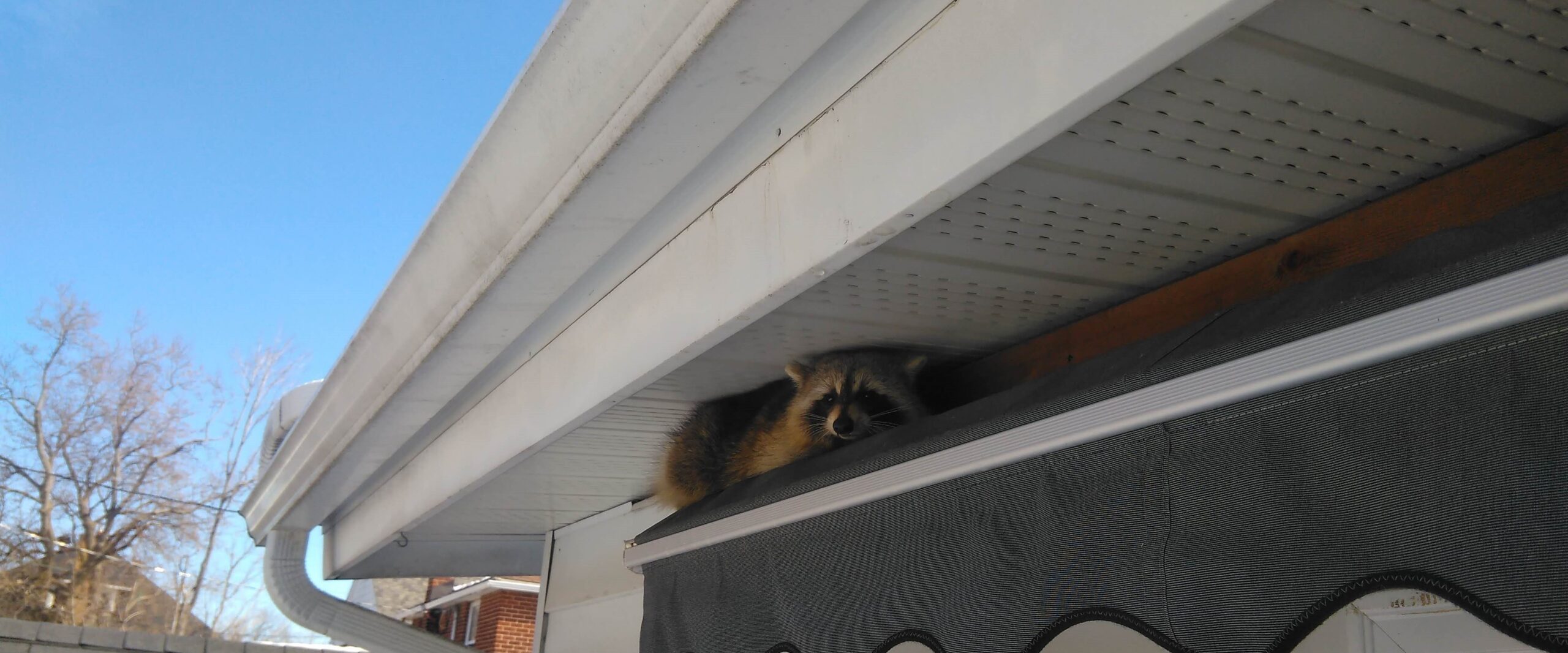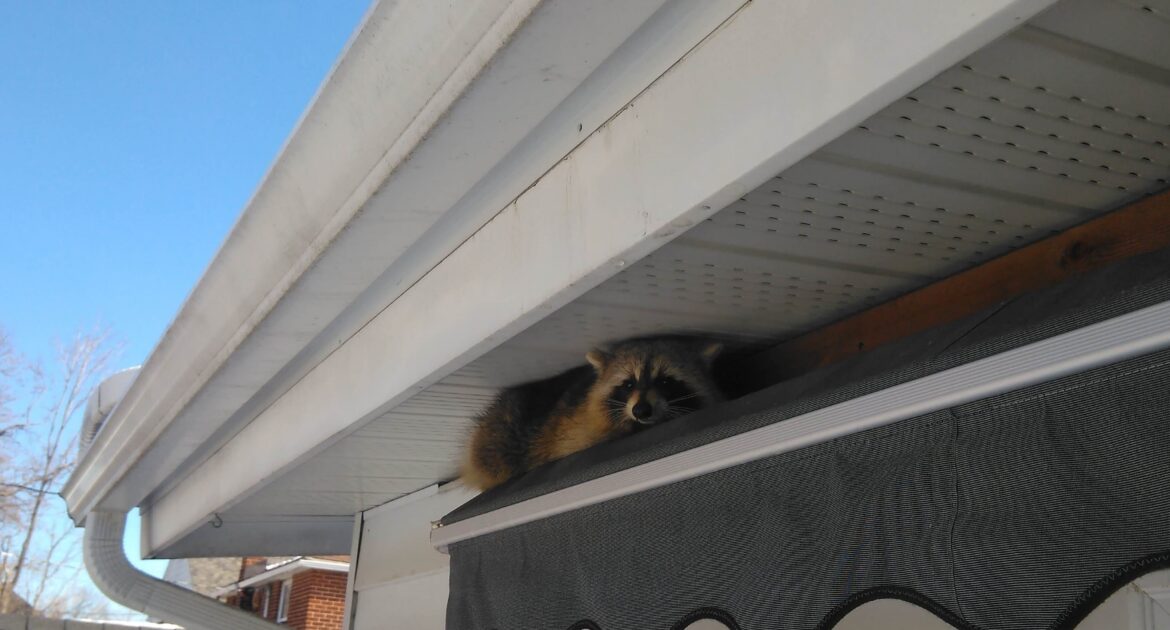Today we will be taking a look at some surprising news out of our neighboring state, Florida. In August 2025, a family in Merritt Island, experienced an unexpected and chaotic home invasion—by a group of raccoons. Around 3 a.m., the raccoons entered through a cat door and proceeded to wreak havoc inside the home. Surveillance footage revealed the raccoons splashing around in the jacuzzi, consuming all the cat food, and scattering bowls throughout the dining room.
In this article, we’ll break down what’s really happening behind the scenes when raccoons in homes throw a “party”, the surprising ways they fit into (and sometimes disrupt) urban ecosystems, and what Skedaddle Humane Wildlife Control in Atlanta can do to safely and manage these wildlife guests.
Let’s open the door to the raccoon party house and see what’s going on inside—and outside—your walls.
Raccoon Behavior in Urban Environments
Raccoons have a reputation for being clever, resourceful, and surprisingly social—all traits that help them survive (and thrive) in busy city environments. With North Atlanta growing and more homes bordering natural spaces, encounters between people and wildlife—including raccoons—are more common than ever.
It may come as a surprise, but raccoon behavior is shaped as much by urban life as by the wild. These urban animals learn quickly how to use everything humans provide, from food sources to safe hiding places.
Some common behaviors in city areas include:
- Investigating trash bins and compost piles for easy meals.
- Climbing over fences, trees, and roofs to access attics and chimneys.
- Creating cozy dens in warm, dry areas such as crawl spaces or unused sheds.
- Using their dexterous paws to pry open latches or widen gaps for entry.
These masked animals aren’t shy about exploring new places and show impressive determination if a home or business offers food or shelter. Raccoons are known for their intelligence—they can solve puzzles, remember solutions, and teach younger animals new skills. All this means that urban raccoons in Atlanta are not only survivors but skilled residents in our shared environment.
Next, let’s look at how their day-to-day activities directly affect local homes and the wider wildlife community.
Raccoons in Atlanta Homes: Identifying the Signs and Understanding the Risks
Having raccoons in your home isn’t always obvious. They’re nocturnal, so most of their activity occurs when the rest of the household is sleeping. Whether you own a family house or a business property, knowing the signs can help you spot a raccoon “party” before things escalate.
Common signs of raccoons in homes include:
- Unexplained noises (scratching, thumping, or chittering) in the attic at night.
- Disturbed insulation, electrical wiring, or ductwork.
- Strong, unpleasant odors due to droppings or urine.
- Torn shingles, bent soffits, or ripped roof vents.
- Small animal footprints or smudge marks near entry points.
A raccoon family can cause significant damage quickly. Beyond property repairs, there are health risks to consider. Their droppings can carry roundworm eggs (Baylisascaris), and raccoons can be carriers of rabies, leptospirosis, and other diseases.
If you spot any of these signs, it’s crucial to act promptly to prevent further damage and protect everyone in your home. But before learning how to manage these visitors, let’s see how they adapt so effortlessly to our world.
How Raccoons Adapt to Urban Life
Raccoons are true city survivors. Over generations, they’ve learned the ins and outs of human neighborhoods, finding new ways to thrive alongside people—sometimes in unexpected manners.
Raccoons urban environments have developed several clever adaptations that make them particularly successful in neighborhoods. Their flexible eating habits allow them to take advantage of a wide range of food sources, from fruits and insects to leftovers in trash cans or pet bowls.
Skilled climbers, they navigate power lines, fences, and trees to reach rooftops and attics, making even elevated homes vulnerable. Raccoons are also adept problem-solvers with excellent memory, capable of opening latches, bins, or unsecured doors. Additionally, mother raccoons often maintain multiple den sites, ready to relocate their kits quickly if a site becomes unsafe. Understanding these behaviors is crucial for homeowners looking to prevent urban raccoon issues and protect their property.
During colder months, raccoons don’t enter a deep hibernation. Instead, they experience a rest state called torpor, using attics and insulated spots to stay warm. These dens often end up being used for raising babies in the spring—which can turn a hidden problem into a full-fledged family event.
Urban properties provide reliable food sources, secure weatherproof spaces for dens, and fewer large predators compared to forests or swamps. It’s no surprise that raccoon populations can expand in urban areas. Let’s take a closer look at how this growth impacts both your property and local wildlife.
Impact of Raccoons on Wildlife and Urban Ecosystems
Many people describe raccoons as troublemakers, but their environmental impact is more complex. There’s a significant gap in public understanding about the roles raccoons play—they’re more than scavengers.
Ways raccoons shape city ecosystems include:
- Competing with native species: Raccoons may outcompete other small mammals for food and den sites, potentially altering local wildlife populations.
- Spreading seeds: By eating fruits and berries, then dispersing seeds in their droppings, raccoons help certain plants and trees thrive in urban areas.
- Cleaning up organic waste: As bold scavengers, raccoons help reduce waste from garbage piles and compost, indirectly supporting city cleanliness.
- Affecting disease cycles: By moving through different habitats, they may spread or help control certain pests, but also pose a risk for disease transmission.
Raccoons’ role in urban waste management is unique. Their habits of rummaging through refuse mean less leftover food sits around attracting insects or other unwanted guests. However, their scavenging can also lead to more frequent interactions with residents and pets, raising the likelihood of disease spread.
Interactions between raccoons, pets, and other wildlife are complex. Raccoons may come into conflict with outdoor cats or dogs, and they can prey on bird nestlings or smaller mammals. Still, their adaptability and resourcefulness mean they are a fixture in our urban mix.
Understanding these dynamics can help us better manage our homes and businesses while respecting local wildlife.
Practical Strategies for Managing Raccoon Presence
Living alongside raccoons doesn’t have to mean accepting damage or health risks. With timely action and professional help, you can keep your property raccoon-free in a humane way.
Here’s what we recommend for property owners:
- Secure all garbage and compost bins with tight, raccoon-proof lids.
- Remove pet food from outdoor areas overnight.
- Trim trees, shrubs, and branches away from roofs and windows.
- Inspect rooflines, soffits, and vents for possible entry points; repair damage promptly.
- Store birdseed and animal feed in sealed, heavy-duty containers.
If you suspect raccoons are present in your home or business, DIY removal can be dangerous. Professional assistance is critical, particularly during the baby season (late winter to summer), as only trained handlers can safely relocate kits.
At Skedaddle, our approach involves:
- A complete property assessment to identify all entry points and vulnerabilities.
- Humane removal, including kit extraction with the help of thermal imaging.
- Cleaning and deodorizing affected areas to prevent disease and future wildlife attraction.
- Sealing potential re-entry points with heavy-gauge screening and durable materials.
Our team’s experience ensures every step, from baby reunification to final repair, is handled delicately for both people and wildlife. We respect the role raccoons play in our environment, but we work diligently to keep your property safe, secure, and damage-free.
As we transition from preventative tips to real-life scenarios, let’s address some of the most common questions homeowners and business owners ask.
Take Control of Raccoon Intrusions with Expert Solutions
Raccoons may add a touch of wild excitement to urban life, but their presence inside your home can quickly shift from curiosity to chaos. Their resourcefulness makes them persistent intruders, causing insulation damage, electrical hazards, and health risks—all while remaining nearly invisible until significant problems arise. Proactive intervention, combined with a comprehensive understanding of raccoon behavior and home construction, is key to avoiding escalating issues and ensuring the safety of your family and property.
Don’t let your attic become the next raccoon party house. Trust Skedaddle’s proven, humane approach to wildlife removal for thorough assessments, expert hand removal—including safe treatment of vulnerable babies—and meticulous repairs to keep raccoons out for good. Safeguard your home and restore your peace of mind by contacting Skedaddle today—the leader in reliable, compassionate wildlife control.




